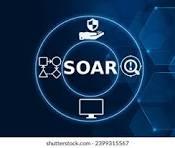The ROI of SOAR: How Security Orchestration and Automation Redu
-
Posted by Net Witness Filed in Technology #SOAR #Security Automation #ROI #Incident Response #SOC Efficiency #Cybersecurity Operations #MTTR Reduction 63 views
In today’s cyber landscape, speed and efficiency define resilience. Attacks are becoming faster, stealthier, and increasingly automated — leaving security teams struggling to keep up. A recent IBM study found that the average time to identify and contain a breach still exceeds 200 days, and organizations that respond faster save millions in damages.
Enter SOAR (Security Orchestration, Automation, and Response) — a technology that not only accelerates response but delivers measurable return on investment (ROI) by reducing breach costs, improving analyst productivity, and transforming Security Operations Centers (SOCs) into streamlined, intelligent ecosystems.
Why ROI Matters in Security Operations
Historically, cybersecurity has been seen as a cost center — a necessary expense rather than a value driver. But modern security leaders are rethinking that narrative. Today, investments in automation and orchestration are measured not just by compliance or coverage, but by tangible financial and operational outcomes.
The ROI of SOAR is derived from three key areas:
1. Reducing the financial impact of breaches through faster detection and containment.
2. Lowering operational costs by automating repetitive, low-value tasks.
3. Improving workforce efficiency and morale, mitigating burnout among analysts.
Each of these outcomes contributes directly to stronger cyber resilience and healthier business performance.
1. Reducing Breach Costs Through Faster Response
The cost of a data breach rises exponentially with every passing hour of exposure. The longer attackers linger undetected, the more data they steal, systems they compromise, and downtime they cause.
SOAR platforms shorten this timeline dramatically by connecting all security tools — from SIEM and EDR to firewalls and threat intelligence — into one coordinated response system.
Here’s how it delivers measurable savings:
· Automation of repetitive actions: SOAR playbooks automatically isolate infected endpoints, block malicious IPs, disable compromised accounts, and trigger containment within seconds.
· Reduced Mean Time to Respond (MTTR): Automated triage and enrichment eliminate delays in manual verification and escalation.
· Proactive incident prevention: Historical playbook data and machine learning identify recurring attack patterns before they escalate.
According to Forrester’s Total Economic Impact™ of SOAR report, organizations deploying automation achieved up to 60% faster response times and saved an average of $2.2 million annually in breach-related costs.
2. Lowering Operational Costs Through Workflow Automation
Security teams today face alert overload — with SOCs receiving thousands of alerts daily, many of them false positives. Analysts spend much of their day performing repetitive, manual tasks like:
· Enriching alerts with threat intelligence.
· Gathering logs from multiple systems.
· Investigating phishing emails or privilege escalations.
SOAR solutions eliminates this inefficiency by automating and orchestrating these workflows end-to-end. For example:
· When a phishing email is reported, SOAR automatically scans attachments, cross-references threat feeds, and deletes the malicious message across all inboxes.
· When a new indicator of compromise (IoC) is detected, SOAR updates firewalls, SIEM correlation rules, and EDR policies simultaneously.
This automation translates into substantial cost savings.
A mid-sized enterprise running 24/7 SOC operations can save 2,000–3,000 analyst hours per year, reducing overtime costs and enabling teams to focus on high-priority investigations and proactive threat hunting.3. Preventing Analyst Burnout and Skill Attrition
The cybersecurity workforce shortage remains one of the industry’s biggest challenges. Constant alert fatigue, long hours, and repetitive tasks contribute to burnout and turnover, weakening security posture over time.
SOAR helps address this by:
· Reducing cognitive load: Automation handles routine triage, so analysts can focus on complex decision-making.
· Improving job satisfaction: SOC professionals spend more time on strategic analysis and less on “digital firefighting.”
· Encouraging continuous learning: Analysts use SOAR insights and playbooks to refine response tactics and threat modeling.
A happier, more focused security team isn’t just more productive — it’s also more resilient. Organizations implementing SOAR report 30–40% improvements in analyst retention, saving the hidden costs of hiring, onboarding, and training replacements.
4. Tangible ROI Metrics from SOAR Implementation
The ROI of SOAR can be measured across financial, operational, and human dimensions. Typical metrics include:
· Reduction in MTTR: 50–70% faster incident containment.
· Reduction in false positives: Up to 80% fewer redundant alerts requiring manual review.
· Labor savings: Thousands of analyst hours reallocated annually.
· Reduced breach losses: Millions saved in direct financial impact and regulatory fines.
Additionally, enterprises adopting SOAR often see improved compliance posture through automatic documentation and audit trails — reducing the cost of demonstrating adherence to frameworks like GDPR, ISO 27001, or PCI-DSS.
5. Real-World Example: From Hours to Seconds
Consider a financial services firm facing frequent phishing attacks. Previously, analysts manually investigated each report, consuming 20–30 minutes per case. With SOAR playbooks, the same process — threat validation, IOC lookup, email removal, and account block — now runs in under 90 seconds.
This automation cut phishing response time by 95%, saving the firm over 2,500 analyst hours per year while preventing customer data exposure — a clear, measurable ROI both in cost savings and risk reduction.
Conclusion: Turning Automation into Advantage
In 2025 and beyond, automation is not a luxury — it’s a necessity.
SOAR delivers more than operational convenience; it provides strategic value by reducing breach impact, improving team efficiency, and converting reactive security into proactive resilience.The ROI of SOAR lies in its ability to do more with less — enabling enterprises to respond at digital speed, lower operational costs, and empower analysts to work smarter, not harder.
In a world where every second counts, SOAR doesn’t just protect your network — it protects your bottom line and your people.
